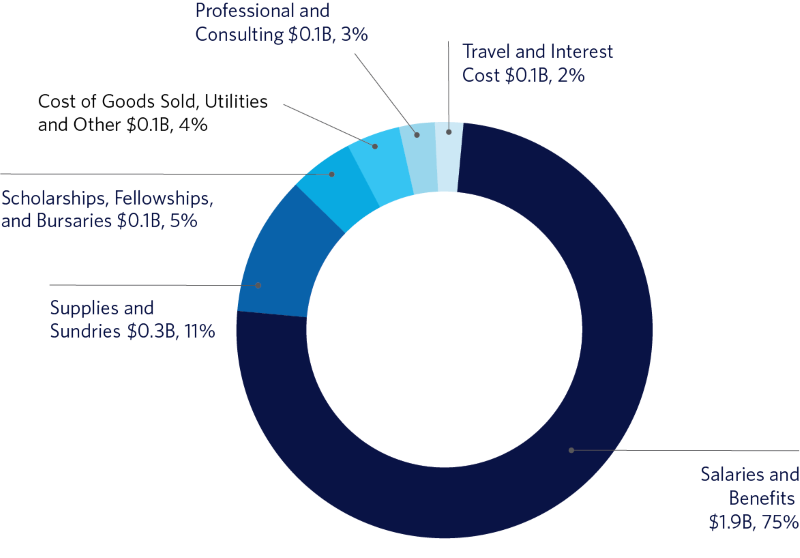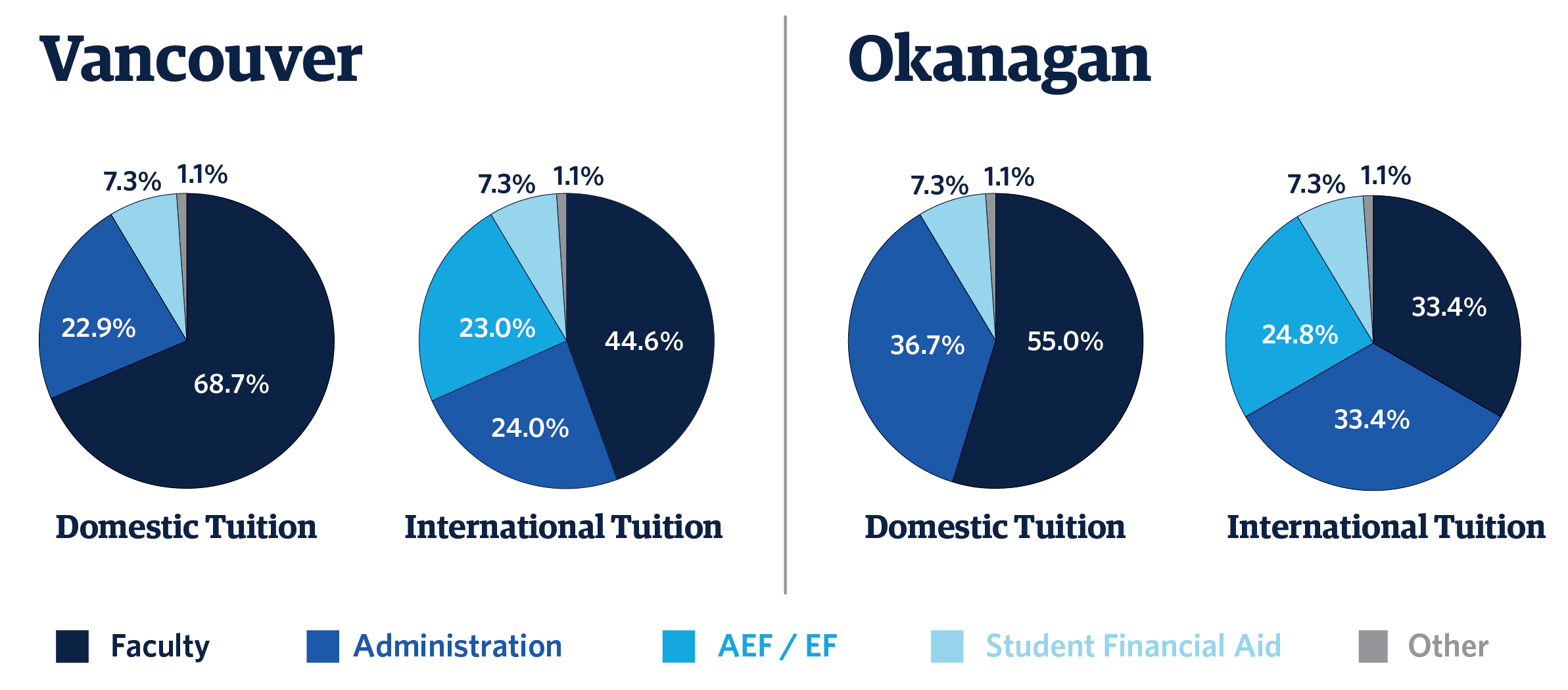At a high level, UBC’s budget is composed of two parts: the Operating Fund, and Non-Operating Funds.
Operating Fund
The Operating Fund covers the core academic operations of the university, investments in new programs and services, and resources required to maintain current operations. It includes all “unrestricted” funding for UBC—resources that do not have a specific use case determined—primarily government grants, student tuition, and sales and services revenue. These revenues are the primary source of funding for academic programming, university services, ancillary operations, and strategic initiatives undertaken by the university.
Non-Operating Funds
Non-operating funds are “restricted” and can only be used towards specific initiatives, such as research, capital projects, and endowment-related activities.
Together these comprise UBC’s consolidated budget:

What makes up the Operating Budget?
UBC’s Operating Revenues
The operating budget is made up of revenues and expenses to support core academic operations. The primary major sources of revenue for UBC are:
- Government grants
UBC receives funding from the provincial and federal governments for research, domestic undergraduate courses, and some graduate-level teaching. - Student tuition
Fees are collected from domestic and international students. - Sales and services
Revenue is collected from lease income and fee-for-service activities across both campuses. Ancillary services, including student housing and food services, are expected to be financially self-sustaining.
| Operating revenue (in $ millions) | Actuals FY2023 |
Actuals FY2024 |
Approved Budget FY2025 |
|---|---|---|---|
| Government Grants | 863 | 972 | 1,083 |
| Domestic Tuition | 393 | 407 | 424 |
| International Tuition | 610 | 630 | 662 |
| Sales and Services | 453 | 477 | 503 |
| Other income | 8 | 17 | 4 |
| Operating Revenues | 2,327 | 2,503 | 2,676 |

UBC’s Operating Expenses
A significant portion of the university’s expenses arise from employing faculty and staff and resourcing day-to-day operations. Many Faculties also receive funding directly from non-core activities outside of the operating budget. These funds are managed directly by Faculties to support their operations. The primary expense categories for UBC are:
- Salaries and benefits
Faculty and staff are committed to teaching and providing support to students, as well as overseeing the general operations of the university. - Operational supplies and sundries
These expenses support the ongoing maintenance of university services. - Scholarships, fellowships, and bursaries
UBC offers financial aid for domestic and international students. - Cost of goods sold, utilities, and other expenses
This category supports UBC’s general operations. - Professional fees
These expenses include contractors and consultants delivering targeted work for UBC. - Travel and Interest
Costs include professional travel and field trips, as well as interest on long-term debt.
| Operating expenses (in $ millions) |
Actuals FY2023 |
Actuals FY2024 |
Approved Budget FY2025 |
|---|---|---|---|
| Salaries & Benefits | 1,626 | 1,778 | 1,917 |
| Supplies & Sundries | 238 | 254 | 282 |
| Scholarships, fellowships, and bursaries | 115 | 116 | 126 |
| Cost of Goods Sold, Utilities, and Other Expenses | 84 | 91 | 99 |
| Professional fees | 66 | 67 | 77 |
| Travel and Interest Cost | 40 | 45 | 46 |
| Operating Expenses | 2,169 | 2,351 | 2,547 |

Where Students’ Tuition Goes
Tuition fees support UBC Faculties, central administration, and student financial aid. In addition, a portion of tuition from international students goes towards the Academic Excellence Funds (AEF) on the Vancouver campus, and the Excellence Fund (EF) on the Okanagan campus.
- Faculty and central administration
UBC uses a decentralized budget model, which means that faculties and administrative units are responsible for balancing budgets within their specific areas. - Student financial aid
A set portion of all tuition goes back to students as financial aid in the form of bursaries, scholarships, and awards. - Excellence Funds (AEF and EF)
These funds support strategic investments to attract the best faculty and students, support world-changing research, and deliver an exceptional learning experience. Some of these resources are re-invested towards student financial aid through strategic initiatives. - Other
A small portion of tuition is allocated to cover financial transaction fees and potential bad debts.
Approximate tuition allocation from 2023/24 is as follows:

Budget Considerations
Like other post-secondary institutions in Canada, UBC continues to be impacted by escalating cost pressures, global geopolitical uncertainties, and heightened competition in the sector. Higher than expected inflation rates in Canada, as well as their flow-through impact on supply chains, have led to a significant rise in costs relating to construction, equipment, commodities and library collections.
The 2024/25 budget was prudently developed to acknowledge factors like these. Despite the headwinds before us, UBC remains in a healthy financial position, committed to investing in and advancing the university’s academic mission and continuing to innovate as a global leader in post-secondary education.
Full information relating to the considerations made by the university during the development of the budget, as well as the financial plan for 2024/25, is available in the annual budget report.